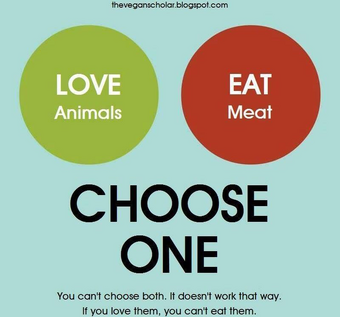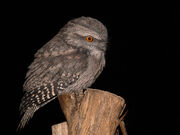|
Hola, mi nombre es Michelle!
|

|

|
| Think about it. When you eat a piece of meat, you literally eat a corpse, a dead animal. I’m not saying this to “disgust” you or to convince you of anything, just calling things with their names. We have been using the word “meat” long enough to make us forget it is a dead animal. This animal was alive before, and it was raised, and killed, not in awesome ways. --Laura Marie Now, when I eat, honestly, I am so much happier to tell myself that this meal didn’t cause any murder, does not contain any blood, cruelty, and that nobody is dead for my palate. It is honestly one of the best feelings in the world. --Laura Marie |
|
|
Welcome to my blog!
Øβŝȅŝŝȅɖ ŵǐțȟ βǐɼɖŝ 
![]()

| “ | I personally could talk about birds for hours and never get tired. | ” |
—A quote borrowed from a friend | ||
This is a continuation from my previous post, since the previous one got a bit long.

Banded broadbill
This post follow Tif Checklist:
- PALEOGNATHS and ANSERIFORMES Ratites, Tinamous, and Waterfowl,
- GALLIFORMES Landfowl,
- METAVES I: Columbimorphae, Eurypygimorphae,
- METAVES II: Cypselomorphae Steatornithiformes, Nyctibiiformes, Podargiformes, Caprimulgiformes
- METAVES III Apodiformes,
- PELECANAE I Musophagiformes, Gruiformes, Otidiiformes, Cuculiformes,
- PELECANAE II Musophagiformes and Pelecanimorphae,
- CHARADRIIFORMES
Neoaves[]
(nee-OH-ay-veez) [1] - more modern birds, such as crows, woodpeckers, thrushes, parrots.
Example: Banded broadbill.
Metaves[]
(MET-ay-VEZ) [1].
Metaves contains about 10% of the avian tree: 905 extant species in 207 genera and 17 families. Many of the Metavian families have long puzzled ornithologists. They just didn't seem to fit comfortably anywhere on the avian taxonomic tree. One of the attractions of the Metaves hypothesis is that it packages together so many troublesome taxa. The Metaves hypothesis remains controverisal and is a current topic of research [2].
Columbimorphae[]
(cole-UM-bih-MOR-fay) [1].
The smallest of the two groups in Metaves [2].
Mirandornithes[]
(mur-AND-orn-ith-THEZ) [1].
The flamingos and grebes.
Flamingos: Phoenicopteriformes[]
(fone-ih-COP-ter-ih-FOR-meez).
As the title says, the flamingos.
Example: Greater flamingo.
Grebes: Podicipediformes[]
(poh-dih-si-PED-ih-FOR-meez).
The grebes.
Example: Western grebe.
Tropicbirds: Phaethontiformes[]
(fay-TOHN-tih-FOR-meez).
The Tropicbirds are usually considered close to a variety of seabirds, but in an uncertain location (different studies give different results). Recently, they have become more controversial. Fain and Houde (2004) [3], Ericson et al. (2006a)[4], and Hackett et al. (2008) [5] placed them in Metaves while a recent paper by Morgan-Richards et al. (2008) found them somewhat related to the hawks [2].
Example: Red-tailed tropicbird.
Sandgrouse: Pterocliformes[]
(TEAR-oh-CLID-ih-FOR-meez) [1].
The sandgrouse.
Example: Chestnut-bellied sandgrouse.
Mesites: Mesitornithiformes[]
(mes-it-ORN-ith-ih-FOR-meez) [1].
Small birds only found in Madagascar. Affinities uncertain. Sometimes put in Gruiformes [6].
Example: Subdesert mesite.
Doves, Pigeons: Columbiformes[]
(cole-UM-bih-FOR-meez).
The pigeons and doves.
Example: Rock pigeon.
Eurypygimorphae[]
(UR-ee-pie-gih-MOR-fay) [1].
Sunbittern, Kagu: Eurypygiformes[]
(UR-ee-pie-gih-FOR-meez) [1].
This order only includes two birds with uncertain affinities, the kagu and sunbittern.
Cypselomorphae[]
(sip-sel-oh-MORPH-ay) [1].
Hummingbirds and their allies.
Oilbird: Steatornithiformes[]
(stee-at-ORN-ith-ih-FOR-meez) [1].
Only includes the oilbird.
Potoos: Nyctibiiformes[]
(nyk-tib-bee-ih-FOR-meez) [1].
Only includes the potoos, strange-looking South American birds. Only one person seems to recognise this order.
Example: Common potoo.
Frogmouths: Podargiformes[]
(poh-DAR-gih-FOR-meez) [1].
Only includes the frogmouths.
Example: Tawny frogmouth.
Nightjars: Caprimulgiformes[]
(cap-rih-MUL-gih-FOR-meez).
The nightjars and their allies.
Example: Standard-winged nightjar.
Swifts, Hummingbirds: Apodiformes[]
(ah-pod-ih-FOR-meez).
The swifts and hummingbirds, including the owlet-nightjars.
Example: Purple-throated carib.
[]
(CORE-on-AY-veez) [1].
Fain and Houde (2004) [3] dubbed the remaining birds Coronaves. Succeeding analysis by Ericson et al. (2006b) [4] and Hackett et al. (2008) [5] have modifed the membership of Coronaves, but the basic relationship remains. One of the major groups in Coronaves includes a number of mostly aquatic and semi-aquatic birds, along with cuckoos and turacos. Earlier versions of this list have referred to this group used the old term ‘Natatores’, but Pelecanae seems a better choice [7].
Pelecanae[]
(pel-eh-can-AY) [1].
Opisthocomimorphae[]
(op-is-thou-COMB-ih-MOR-fay) [1].
Opisthocomiformes[]
(op-is-thou-COMB-ih-FOR-meez) [1].
Only includes the hoatzin.
Gruimorphae[]
(groo-ih-MOR-fay) [1].
Bustards: Otidiformes[]
(oh-tid-ih-FOR-meez) [1].
Includes an Old World family called the bustards, or floricans.
Example: Great bustard.
Cuckoos: Cuculiformes[]
(cue-cue-lih-FOR-meez).
Includes the cuckoos and their allies.
Example: Lesser roadrunner.
Cranes: Gruiformes[]
(groo-ih-FOR-meez).
Includes the cranes and their allies.
Example: Limpkin.
Musophagimorphae[]
Turacos: Musophagiformes[]
(mue-soh-faj-ih-FOR-meez) [1].
Only includes birds called the turacos, some are also called plantain-eaters or go-away-birds.
Example: Great blue turaco.
Pelecanimorphae[]
(pel-eh-can-ih-MOR-fay) [1].
A group of birds that appeared to be related to each other.
Loons: Gaviiformes[]
(gay-vee-ih-FOR-meez).
Only includes the loons, also known as divers.
Example: Common loon.
Penguins: Sphenisciformes[]
(sven-ishk-if-FOR-meez) [1].
Only incudes the penguins.
Example: Yellow-eyed penguin.
Seabirds: Procellariiformes[]
(pro-SELL-are-ih-FOR-meez).
Includes birds such as albatrosses and petrels.
Example: Snow petrel.
Storks: Ciconiiformes[]
(sick-on-ih-FOR-meez).
This order has been dissolved and only includes the storks.
Example: African openbill stork.
Cormorants: Suliformes[]
(sue-lih-FOR-meez) [1].
These birds used to be in Pelecaniformes, but now in a new order. Includes the cormorants and their allies.
Example: Blue-footed booby.
Pelicans: Pelecaniformes[]
(pel-ih-can-ih-FOR-meez).
Only includes the pelicans, the shoebill and the hamerkop.
Example: Dalmatian pelican.
Herons, Ibises: Ardeiformes[]
(are-day-ih-FOR-meez).
Includes the herons and their allies.
Example: Eurasian spoonbill.
Charadriae[]
(char-rad-REE-ay) [1].
Shorebirds: Charadriiformes[]
(char-RAD-rih-FOR-meez).
This group includes the gulls, sandpipers, auks (e.g. the puffins), and their allies.
The Charadriiformes have been carefully studied in recent years and DNA methods have proven especially effective at unraveling the taxonomy. We not only know how the various families relate, but we also have a good handle on many of the genera (the large white-headed gulls continue to puzzle) [8].
Example: Black skimmer.
(I will go over more of their classification in another blog post -StaraptorEmpoleonŁǿǿҟӭȓ is the best! ♥ 20:42, July 19, 2011 (UTC))
More birds on my next blog post, since this one's getting long too... --StaraptorEmpoleonŁǿǿҟӭȓ is the best! ♥ 20:42, July 19, 2011 (UTC)
References[]
- ^ a b c d e f g h i j k l m n o p q r s t u v w A guess, since I don't know how to pronounce it
- ^ a b c John H. Boyd III (July 8, 2011). "METAVES I: Columbimorphae, Eurypygimorphae". TiF Checklist. Retrieved 15 July 2011. line feed character in
|title=at position 11 (help) - ^ a b Fain, M.G., and P. Houde (2004), Parallel radiations in the primary clades of birds, Evolution 58(11), 2558-2573.
- ^ a b Ericson, P.G.P., C.L. Anderson, T. Britton, A. Elzanowski, U. S. Johansson, M. Kallersjo, J.I. Ohlson, T.J. Parsons, D. Zuccon, and G. Mayr (2006a), Diversification of Neoaves: Integration of molecular sequence data and fossils, Biol. Lett. 2, 543-547.
- ^ a b Hackett, Shannon J.; et al. (2008-06-27). "A Phylogenomic Study of Birds Reveals Their Evolutionary History". Science. 320 (5884): 1763–1768. PMID 18583609. doi:10.1126/science.1157704. Retrieved 2008-10-18. Cite uses deprecated parameter
|coauthors=(help) - ^ Mesite. (2011, June 30). In Wikipedia, The Free Encyclopedia. Retrieved 02:54, July 18, 2011, from http://en.wikipedia.org/w/index.php?title=Mesite&oldid=437037387
- ^ John H. Boyd III (July 8, 2011). "PELECANAE I Musophagiformes, Gruiformes, Otidiiformes, Cuculiformes". TiF Checklist. Retrieved 15 July 2011. line feed character in
|title=at position 12 (help) - ^ John H. Boyd III (July 8, 2011). "CHARADRIIFORMES". TiF Checklist. Retrieved 19 July 2011.



























